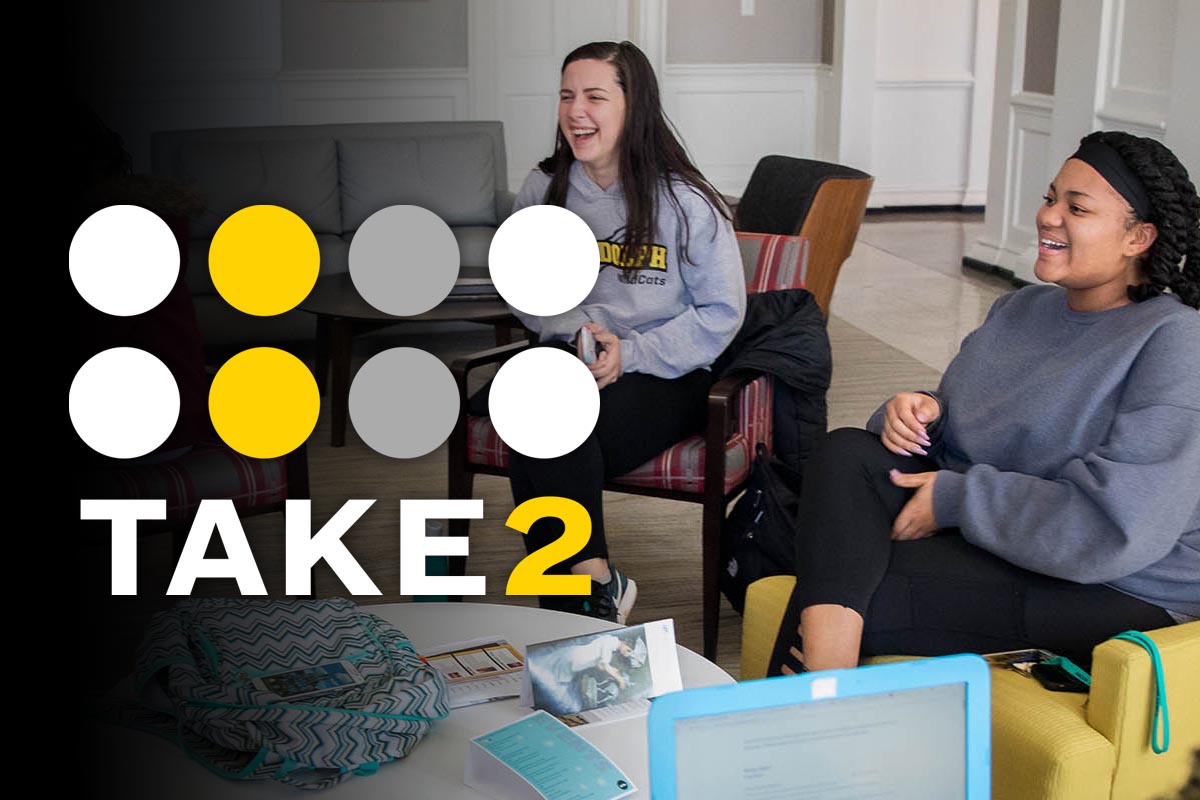Summer research project examining movement dynamics
This story is part of an ongoing series featuring the work of faculty and students participating in Randolph’s Summer Research Program.

Professor Timothy Patrick and Brylee Elliott ’24 built a structure out of PVC pipe for their Summer Research Project.
Research has shown that the observation of an action often involves the internal simulation of that same action in the observer. In other words, you can imagine yourself doing it.
This summer, psychology professor Timothy Patrick and Brylee Elliott ’24 are studying how that internal simulation incorporates elements of an observer’s own movements, instead of depending only on what they’re seeing.
“I’m interested in what goes into the predictions we make about the things that are going to happen in the world, especially events that are unseen,” Patrick said. “We’re using that as the foundation to look at human movement. Rather than relying solely on visual input, how much of ourselves do we put out into the world to make sense of things, especially when visibility isn’t present?”
The pair built a 25-foot-long structure out of PVC pipes covered in a black sheet. Patrick filmed Eliott walking out in the open, eventually disappearing behind the sheet, which is marked with a series of white lines signifying different points in her journey.

Participants then engage in a two-part process, first walking behind the sheet so Patrick and Elliott can calculate their walking speed. Then they return to the lab to watch the video of Elliott, making predictions about when she reaches certain points behind the curtain.
The goal is to use the collected data to see if the participants’ predictions correlate more with Elliott’s walking speed or their own.
“We’re going to see if the timing of your predictions line up more with what you see, what you imagine the other person doing, or what you would actually do in that position,” Patrick said.
They’ve already collected data supporting their hypothesis that the accuracy of the predictions goes down the longer Elliott is obstructed from view.
“The longer she is invisible or unseen, the more I have to rely on my internal mechanisms to extrapolate rather than my visual memory,” Patrick explained. “But it does seem to sort of plateau. The first point, there’s minimal error because you’re only walking another five feet. Once you get to the third and fourth marker, it jumps up. But the difference between the fourth and fifth is not that severe. There is a shift in the strategy people seem to use.”
Elliott said she often uses real-world examples when describing the work they’re doing.
“If somebody’s going into the grocery store and I’m outside waiting on them, I imagine them going through the store,” she said. “We always make predictions on what’s about to happen. We can kind of see it in our heads. So we’re jumping into that realm. And we’re learning new things every time we’re together.”
Tags: psychology, summer research, summer research 2023, Timothy Patrick
